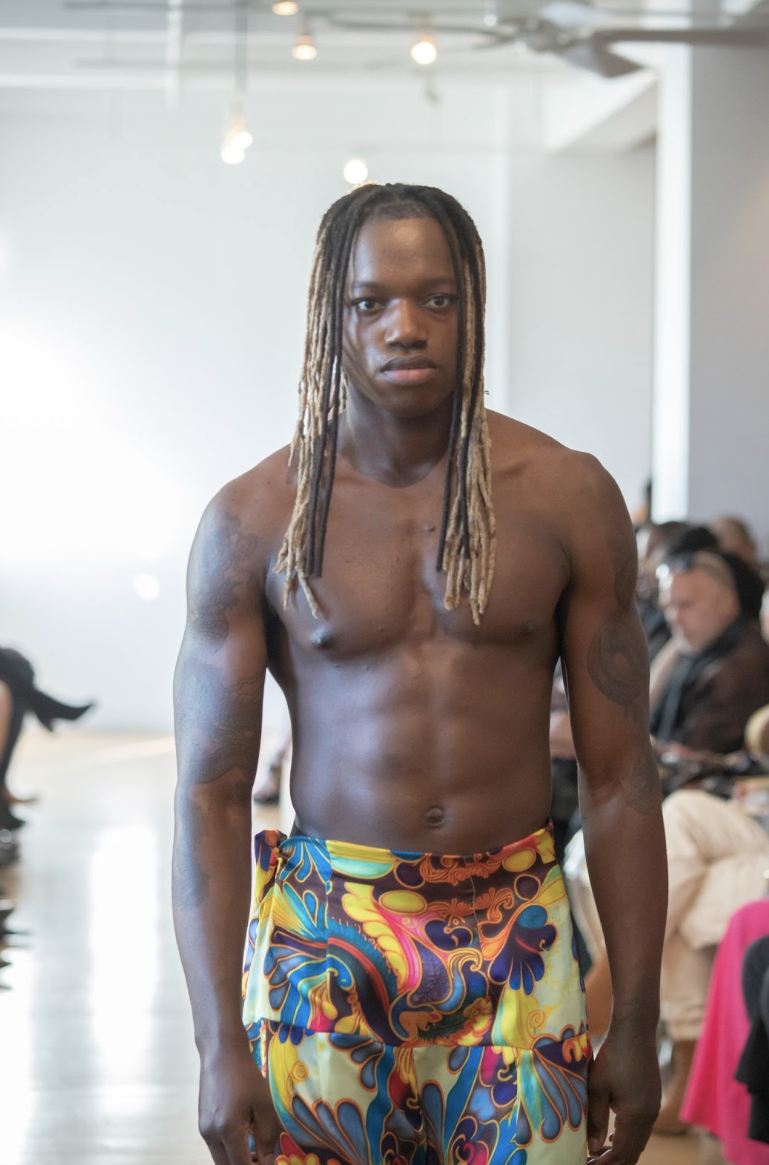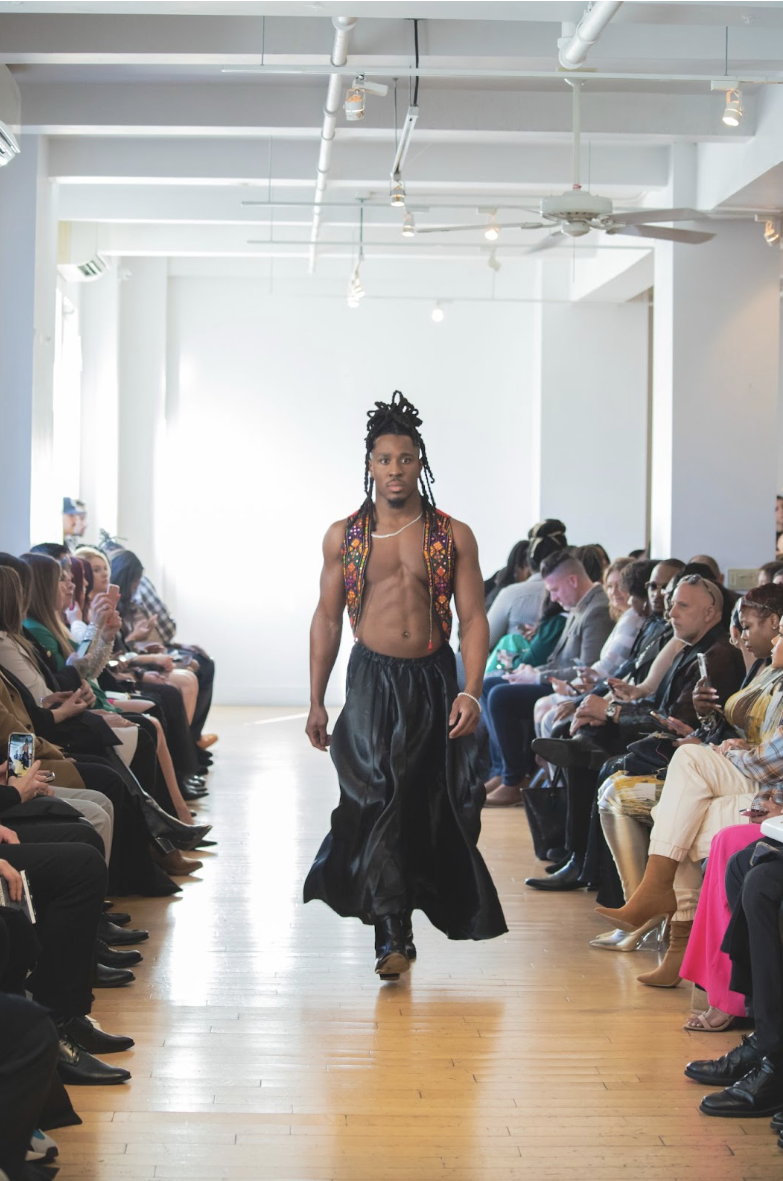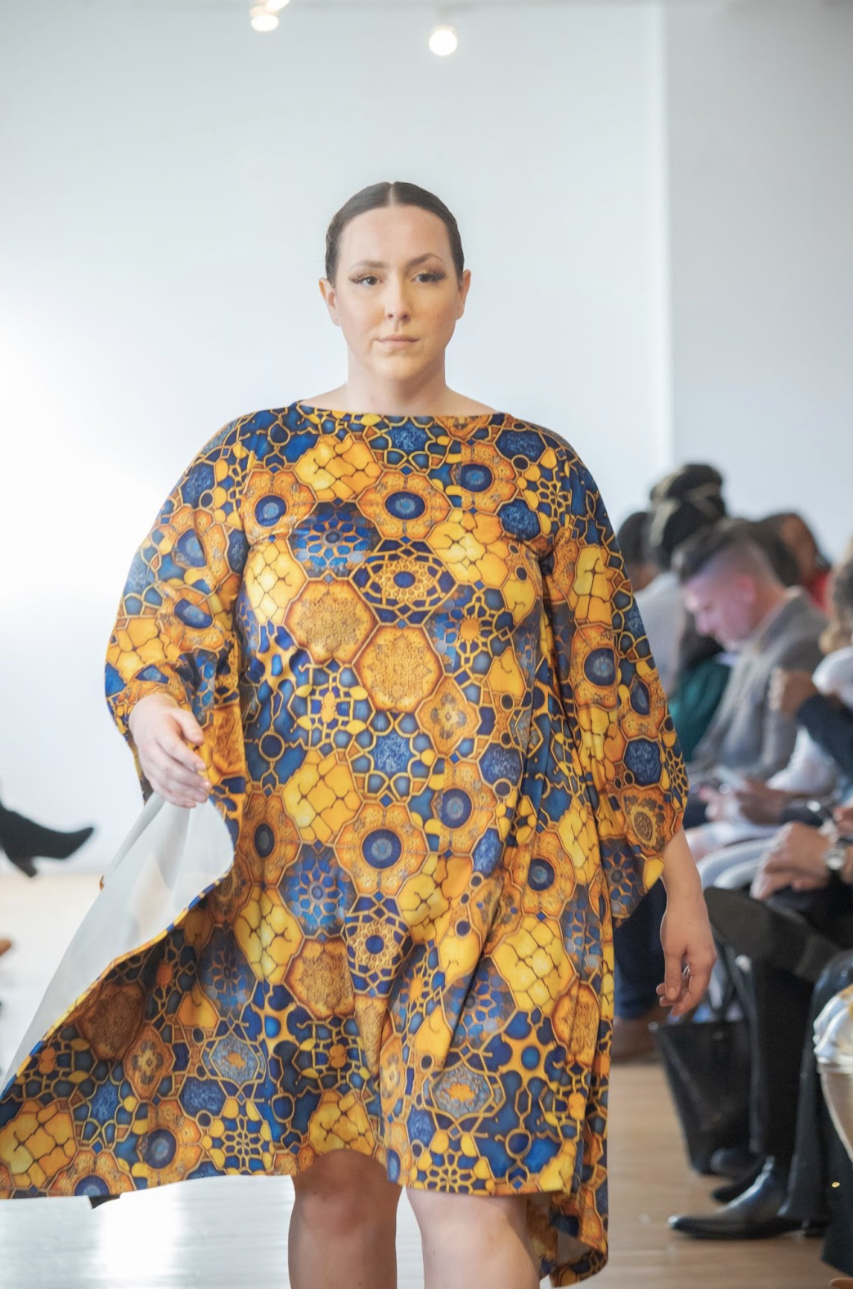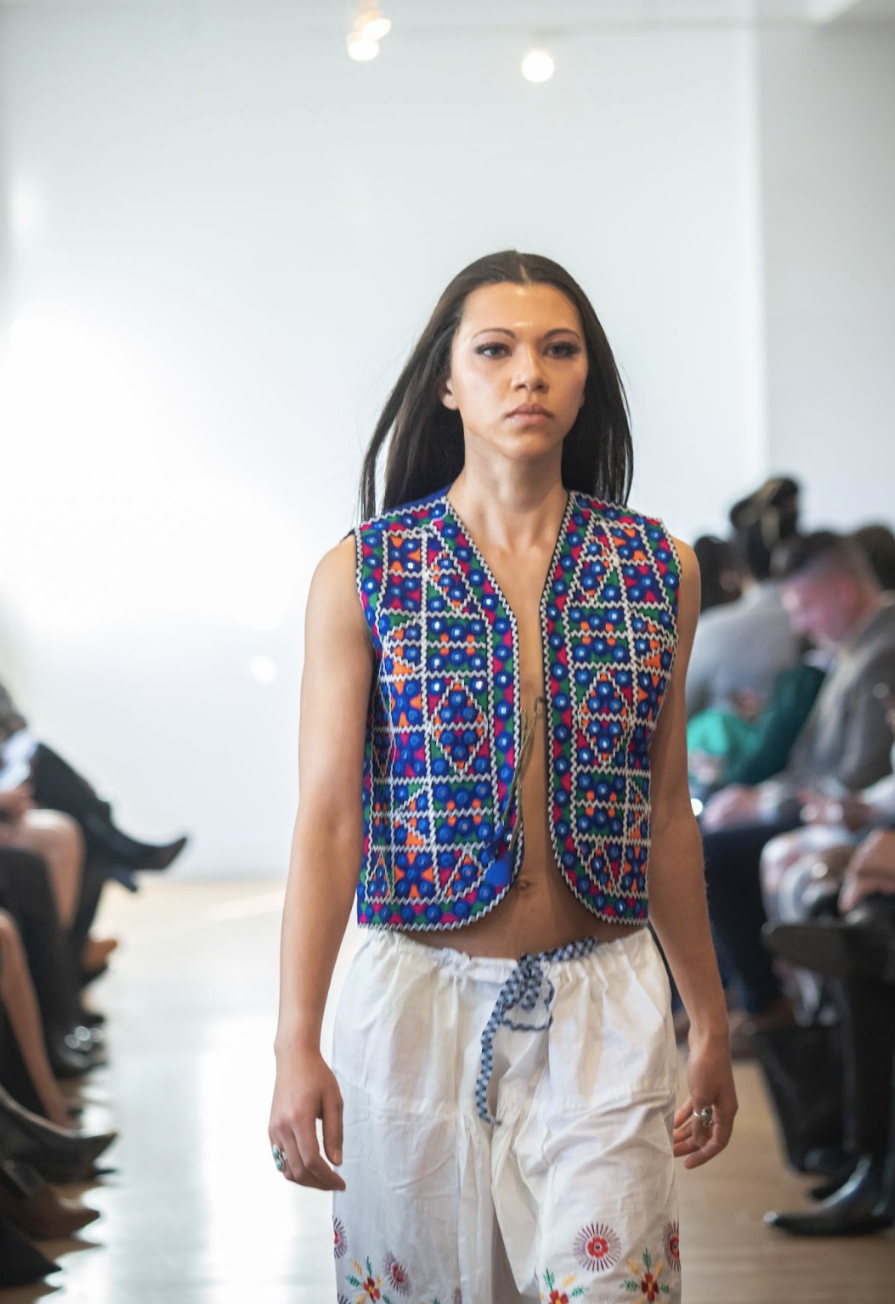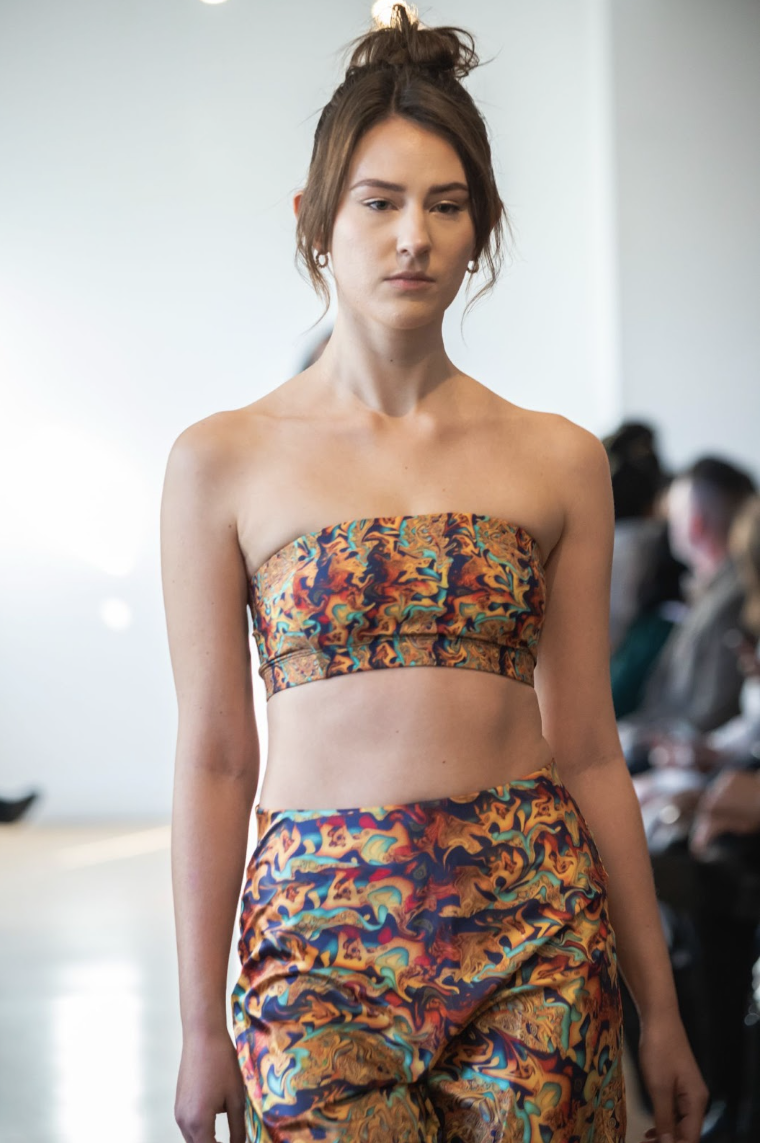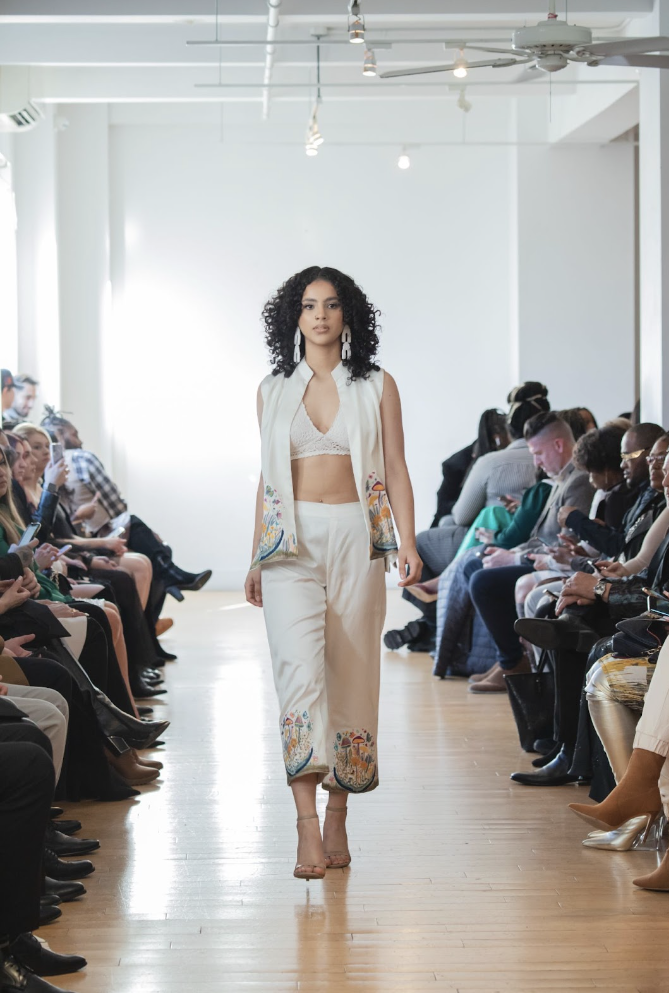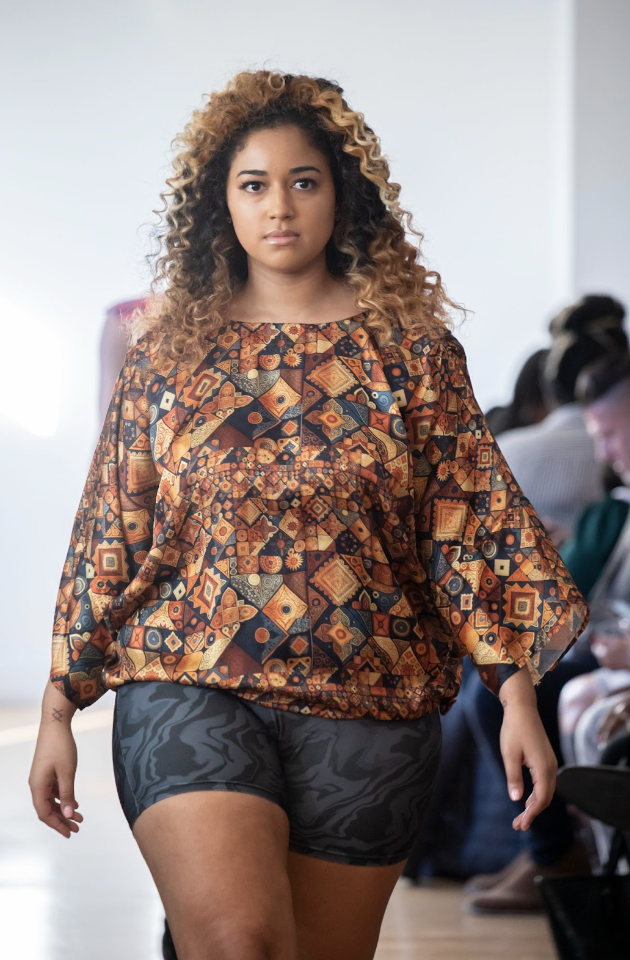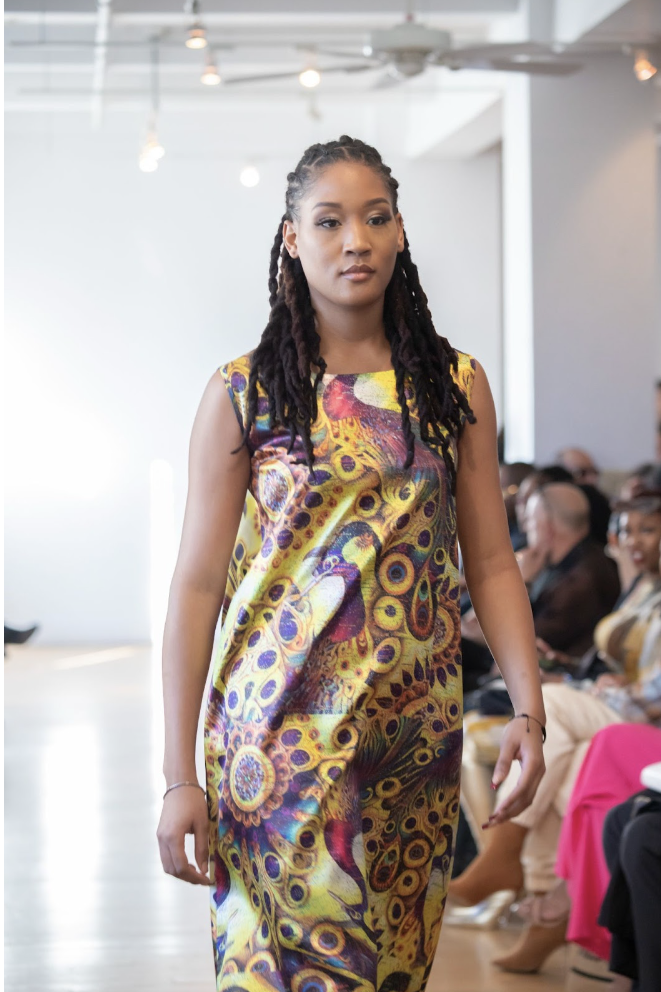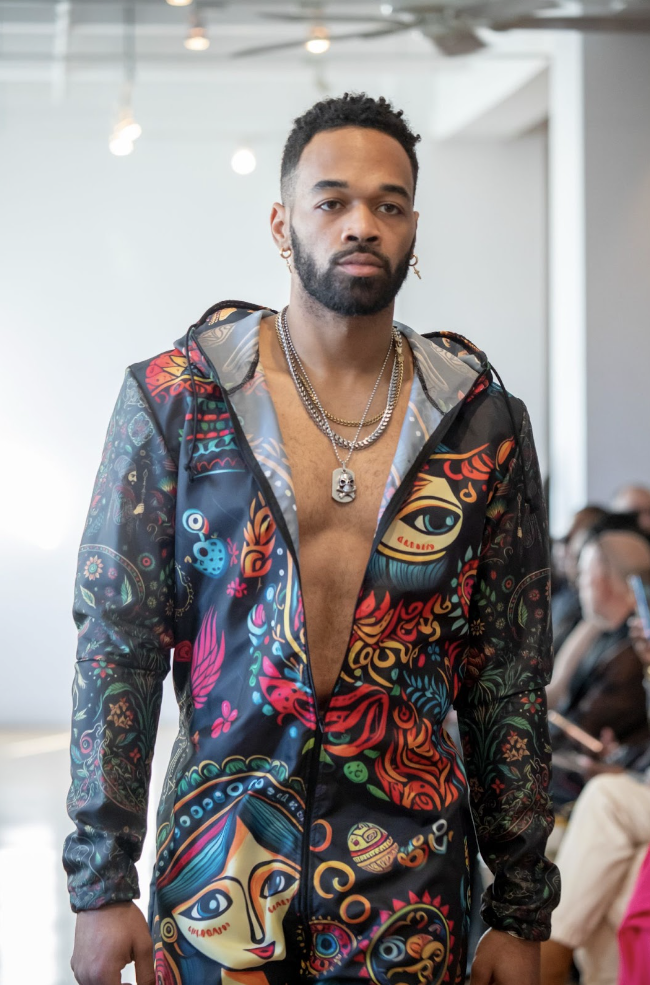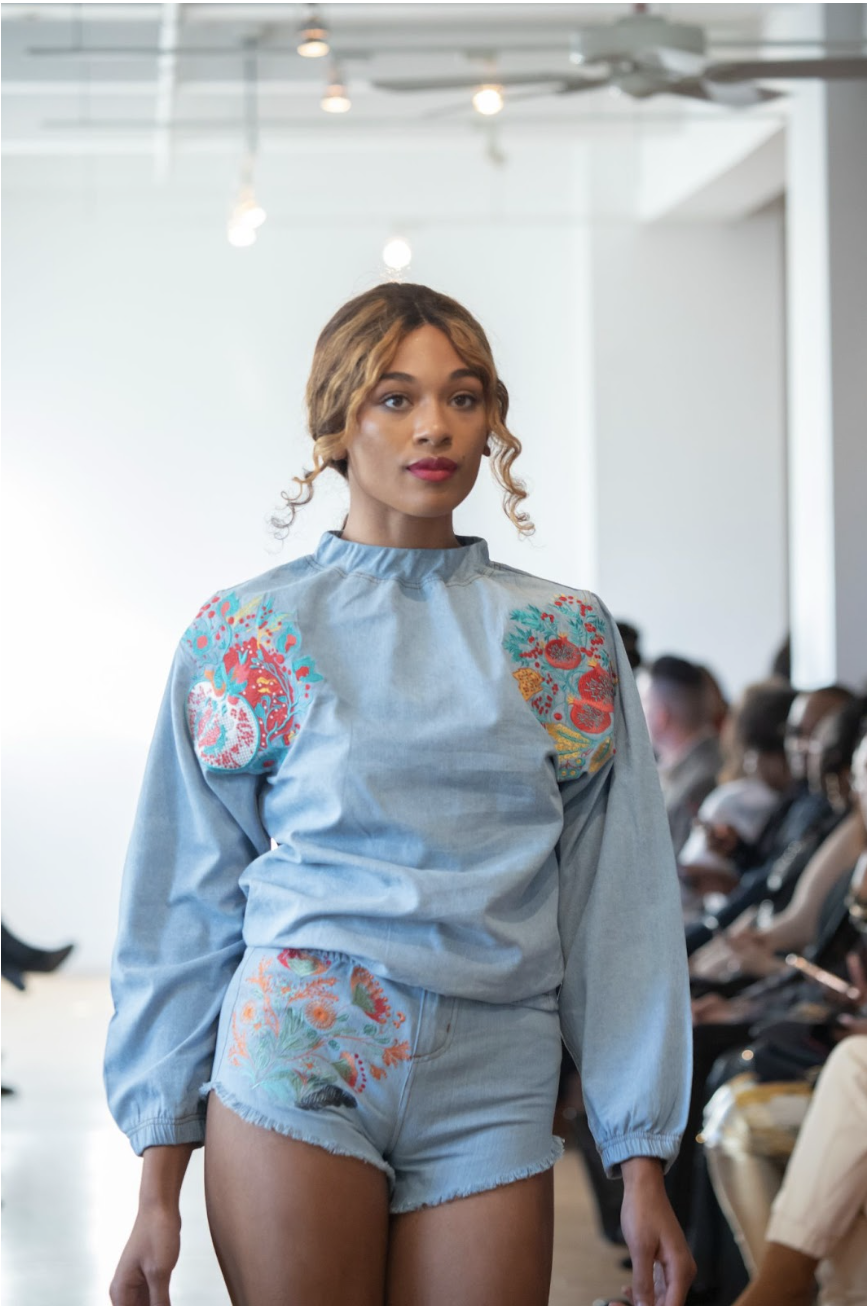Naranji is Looking Back to Find a Way Forward
Graphic by Ruth Ellen Berry.
Weaving values of genderfluid expression and cultural decolonization with AI generative processes, Naranji is sending shockwaves of colorful disruption into a far-too-often static and binary fashion industry. What began as McCormick senior Sahibzada Mayed’s design engineering capstone project grew into Naraji, an ethically sourced, made-to-order, high fashion brand. Less than two years after Naraji’s inception, Mayed’s vibrant, kaleidoscopic designs burst onto fashion’s most elevated and intimidating stage: New York Fashion Week.
Mayed had just two months to prepare for their largest show yet. Tying together a string of connections, opportunities and introductions, Mayed set up a collaboration with the organization Rise, a group run primarily by Black artists focused on uplifting independent designers, at their New York Fashion Week show.
Despite the tight turnaround, Mayed was determined to prioritize circular and sustainable production processes. Naranji, constructing their garments with the aim to minimize waste production at all possible steps in the manufacturing process, is a calm and thoughtful eye in a storm of rapid trend turnover and unrelenting output. Mayed said this causes longer processing times of six months, which encourages consumers to reciprocate sustainability.
“From a marketing perspective [our wait times] could be seen as losing customers, but it is actually a unique selling point because we want people to be intentional about the clothing that they buy. We want people to think about where clothing came from and purchase something mindfully,” Mayed said.
Building on ethical sourcing practices, Naranji extends their mission of cultural reclamation to the manufacturing process itself, handling all production through multiple partners based in Pakistan. Mayed, originally from the Lahore region of Pakistan, grew up watching her mother, a fashion boutique owner, navigate the fashion industry in Pakistan by building connections with various seamstresses, tailors and designers. Now, as Mayed enters the same familiar terrain, she is able to hold tight to these industry ties, stretching them across generations and continents as she manages an entire team of local craftspeople remotely.
“I’ve lived there my whole life, and I really deeply understand how things happen there, especially in the fashion space,” Mayed said. “It's a very embedded process where I was involved throughout the production. I’m trying to really reconnect with those relationships now and establish networks in Pakistan.”
Supported by these connections and maintaining sustainable practices, Mayed was successfully able to complete their NYFW collection, entitled “Return to Us.” The collection is centered around decolonization, boldly walking across ancestral lines in a deep soul-searching process of reconnecting with cultural roots. Teeming with vivid colors, silky textures and Naranji’s signature psychedelic patterns, each piece is an ancestral homage—a captivating narrative that invites the audience to embark on their own journey of cultural reconnection.
“‘Returning to Us’ is essentially returning to our ancestors, returning to our lands. It’s really focused on decolonization in that way,” Mayed said. “It’s psychedelic cultural, trying to claim that space and what it means.”
Mayed said she uses traditional South Asian fashion as a “springboard” to create more contemporary yet still culturally familiar designs. South Asian influences are especially prevalent in aspects like the draping of the garments so thatthe construction of each piece maintains a recognizable sense of fluidity. South Asian and Middle Eastern cultural elements shine through in Naraji’s NYFW collection, and Mayed explained how they relate to her own ancestry.
“It was a complicated entanglement of trying to explore different parts of my identity, different parts of my ancestral histories and narratives and trying to reconnect with them and also celebrate them in a new way,” Mayed said.
Some pieces in the collection are inspired by Mayed’s Arabic culture, as he grew up in a Muslim household. Others are representative of his Persian ancestry, such a piece inspired by the winter solstice, its pattern paying homage to pomegranates, a symbol of new beginnings. Another design includes a peacock print design, carrying deep cultural significance and association with fertility and reproduction.
“Each piece tells a different story. The process was a lot of discovery and soul searching for me too. This is a culture that clearly my ancestors belong to but I don’t know much about, and I’m trying to reconnect with it through putting garments on the runway,” Mayed said.
Seeing those garments, and their stories, on the runway at the New York Fashion Week was nothing less than exhilarating, Mayed said.
“It felt like a huge, huge shift, a jump and shift from our previous shows. It felt a lot more real to us,” Mayed said. “You have to be all-in because you’re representing your brand on such a huge stage, and there’s so much visibility.”
Despite the visibility and excitement that presenting at such a large show granted, Mayed also expressed that there were challenges with confronting binary practices, such as sorting models by male and female clothing, in such an intense space, especially since Naraji is centered around unlearning these systemic distinctions.
“I think we were definitely on the minority side, even just in terms of asking for models that are more gender fluid. I think that’s definitely something that I felt deeply in that space, and I had to recenter myself because it was so different,” Mayed said. “I personally feel like there’s still so much in the fashion industry that has to change. And, sometimes, when you see a lot of that first hand, it's really difficult.”
Mayed, though they were accompanied and supported by a friend, was the only member of Naranji able to attend the NYFW event in person. Nevertheless, they said that their team is crucial for delivering and fulfilling the brand’s mission of forging these necessary changes within the fashion industry. Anthony Engle, Community Engagement Director; Ysi Quiballo, Multimedia Communications Director, and Ilise Angel, Brand Strategy Director work alongside Mayed to bring in much deserved engagement for the brand, collaborate with other local people and businesses to expand the brand and establish community-based discussions and outreach surrounding fashion.
“The brand is so much more than just the designs because it has a whole story. It has a whole mission and vision, and that’s what the team really leads forward—the shared vision we all hold,” Mayed said.
This strong brand identity has been there since the start of Naranji. The idea for Naranji began as Mayed’s individual academic research project, exploring how colonization and European imperialism shifted cultural fashion. Its transition into a high-fashion brand with support of a dedicated and like-minded team has been bolstered by this foundation of knowledge.
“We could write essays about what our brand is. There is so much academic research behind it and that shows up. I think it's an important context to how we started and where it [Naranji] came from,” Mayed said.
Decolonization is at the center of the brand. Itaims to affirm identities and empower marginalized communities to express their culture.his liberatored fashion uproots colonial structures.
“We’re really trying to work towards decolonizing and reclaiming fashion and what it means. Something we always say is: It’s culture, not costume. So we’re trying to reclaim that.”
Naranji also prioritizes gender fluidity, actively shying away from using gender labels and defining clothing in relation to the gender binary.
“Throughout our process, we really emphasize not associating a specific binary form of gender throughout it,” Mayed said. “There's a lot more genders than we even have language for, and I don’t know how to accurately represent all of the diverse gender identities people may hold, and so we really try to be genderful and genderfluid.”
Naranji imbeds these principles into their garments, bolstering their innovation with technology. Mayed said they are in constant collaboration with AI systems and coding mechanisms in the design process.
“Using AI generative coding methods really pushes us to think about what is possible. Whether it’s pattern generation or silhouette garment forms, we really try to push the boundaries.”
Pushing the boundaries at New York Fashion week was just the beginning for Naranji. With offers for subsequent shows and collaborations rolling in, Mayed has their hands full but their mind open.
“I don’t really have a one year, two year or five year plan,” Mayed said. “I’m just excited to get the next thing out and see where that goes and really just be open to whatever comes.”


